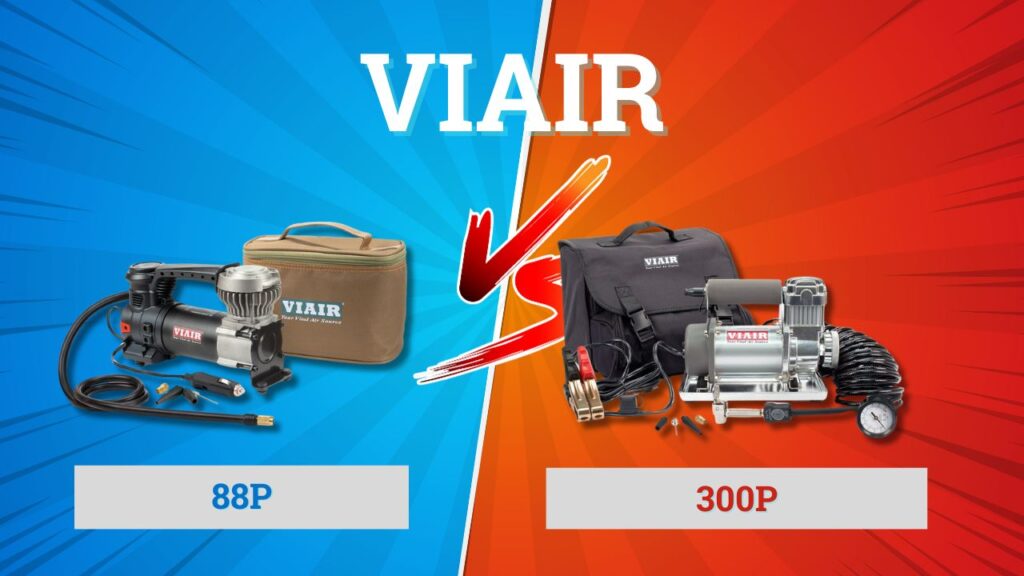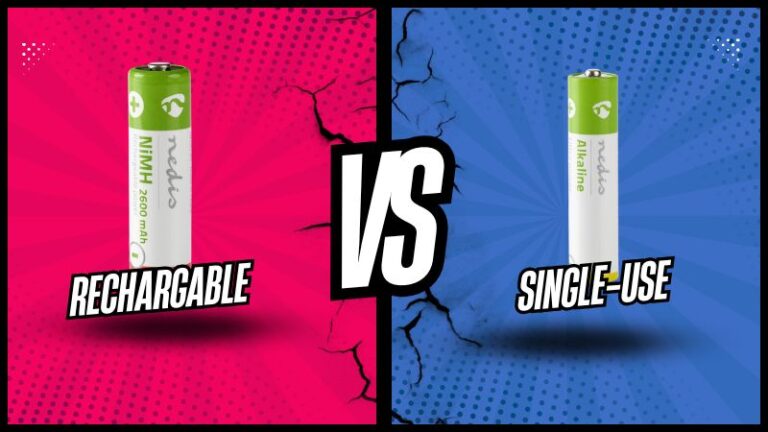In the vast domain of portable compressors, few names ring as resonant as VIAIR. Known for its blend of performance, reliability, and portability, VIAIR compressors are a staple for automotive enthusiasts and professionals alike. Two models that often become the subject of comparison are the 88P and the 300P. This article seeks to dissect their similarities, individualities, and finally weigh their pros and cons, aiming to provide potential buyers with a clear roadmap for their purchase decisions.
Shared Strengths: Common Ground
When examining the VIAIR 88P and 300P, their shared lineage becomes evident in the array of commonalities they offer. These overlapping strengths reflect VIAIR’s steadfast dedication to consistency, quality, and user-friendly design.
Durable Construction
Both the 88P and 300P embody the robust construction that VIAIR is renowned for. Crafted with high-grade materials, these compressors are resilient to the typical wear and tear of regular use. Their solid build ensures that they can withstand the demands of outdoor environments and diverse operating conditions, making them reliable tools for the long haul.
Portability Paradigm
VIAIR has always been an advocate for making compressors that are not just effective but also highly portable. Both these models sport compact dimensions and are meticulously designed to ensure minimal weight without compromising on performance. Their ergonomic handles further facilitate ease of transportation, ensuring they can be carried effortlessly to varied locations.
Direct Battery Clamps
Ease of connection is vital, especially in situations demanding quick fixes. Recognizing this, both the 88P and 300P come equipped with direct battery clamps. These clamps ensure a stable and uninterrupted power supply, simplifying the setup process and amplifying operational efficiency.
Thermal Overload Protection
Ensuring the safety of equipment and users alike, VIAIR has incorporated thermal overload protection in both these models. This feature actively monitors the compressor’s temperature, preventing potential overheating. Such a safeguard not only extends the lifespan of the compressor but also ensures user safety, a testament to VIAIR’s commitment to well-rounded excellence.
Integrated Pressure Gauge
Accurate pressure readings are the linchpin of effective compressor operation. Both the 88P and 300P boast of integrated pressure gauges that are user-friendly and designed for clarity. Their calibrated displays ensure that users can quickly gauge pressure levels, making adjustments as required, and ensuring optimal performance.
Solid Warranty Coverage
Reflecting the brand’s confidence in its products, both compressors come with a warranty. This assurance stands as a testament to the product’s longevity and the company’s dedication to customer satisfaction.
Wide Application Range
Despite their distinctions, both the 88P and 300P are versatile. They cater to a broad spectrum of inflation tasks, be it vehicle tires, inflatable boats, or camping gear. This multipurpose design amplifies their utility, making them essential tools for a range of activities.
Quiet Operation
Noise levels, especially during extended operations, can be a concern for many users. VIAIR, through astute design, has ensured that both these models operate with minimized noise emissions, allowing for a more pleasant operational experience.
Distinct Characteristics: Drawing the Line
When delving deeper into the specifics of the VIAIR 88P and 300P, distinct attributes begin to emerge that set each model apart. These unique characteristics help potential users tailor their choices based on their precise requirements, be they casual or intensive.
Performance Metrics
At the forefront of these differences is the performance factor. The 300P is crafted as a high-caliber model, offering swifter inflation times compared to the 88P. This expedited performance makes it a prime choice for those facing more daunting inflation tasks. On the other hand, the 88P, while proficient in its league, is more attuned to tackling light to medium-duty applications.
Max Working Pressure
Differences in their operational capacities are evident in their maximum working pressure levels. The 300P stands tall with a max working pressure of 150 PSI, granting it an edge for intensive applications. The 88P, while formidable, has its limit set at 120 PSI, catering to its intended audience of moderate users.
Duty Cycle
A pivotal differentiator is their respective duty cycles. The 300P showcases a duty cycle of 33% at 100 PSI. This allows it to run for longer durations before needing a cooling break, optimizing its efficiency for prolonged tasks. The 88P, while designed for episodic usage, has a duty cycle that mirrors its capacity, more tailored to intermittent tasks.
Hose Length & Attachments
The utility of a compressor is often linked to its reach. The 300P extends its reach with a 25-foot hose, providing users with the flexibility to maneuver around vehicles or larger inflatables. The 88P, with its more concise hose length, focuses on compactness, making it less cumbersome but potentially limiting in particular scenarios. Moreover, the type and variety of attachments and nozzles may vary between the two, impacting their versatility in different situations.
Weight & Dimensions
Physical attributes like weight and overall dimensions contribute to their distinctiveness. The 300P, with its beefed-up capabilities, tends to be heftier, potentially influencing its portability. The 88P, being a more compact model, is lighter and more suitable for users who prioritize easy storage and transport.
Aesthetic & Design Elements
While functionality remains paramount, aesthetic differences cannot be overlooked. The 300P often boasts a more professional look, aligning with its advanced capabilities. The 88P, while sleek, has a design that resonates with its target demographic of casual to moderate users.
Price Bracket
Perhaps one of the most critical considerations for many users is the price. With its enhanced feature set, the 300P generally commands a heftier price tag compared to the 88P. This differential in cost might tip the scales for buyers operating within tight budget constraints or those seeking value over advanced capabilities.
Price Point
Given the enhanced features and capabilities of the 300P, it generally comes with a higher price tag than the 88P. Budget considerations might sway potential buyers towards one or the other.
Pros and Cons
VIAIR 88P:
- Pros: Compact design, efficient for light-medium tasks, cost-effective, simple operation.
- Cons: Lower max working pressure, shorter hose, might not be ideal for very rigorous tasks.
VIAIR 300P:
- Pros: Superior performance metrics, longer duty cycle, longer hose for flexibility, higher max working pressure.
- Cons: Slightly bulkier, higher price point, might be overkill for casual users.
In Conclusion
The decision between the VIAIR 88P and 300P hinges on individual needs, preferences, and budget. For those seeking a reliable, compact compressor for light to medium tasks without stretching their budget, the 88P is an excellent choice. However, for users who require top-tier performance, flexibility, and are willing to invest a bit more, the 300P stands as a formidable contender.
Regardless of the choice, both models encapsulate VIAIR’s commitment to quality, performance, and user-centric design. Choosing either ensures you’re getting a piece of reliable machinery that’s designed to serve efficiently and last long.




